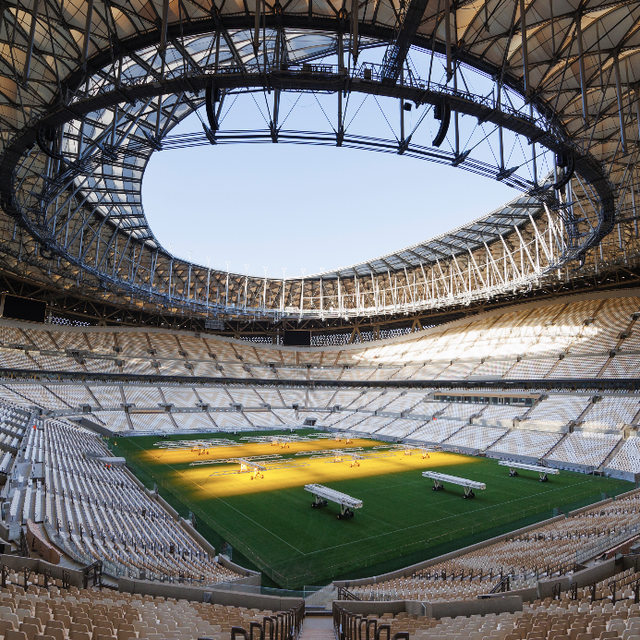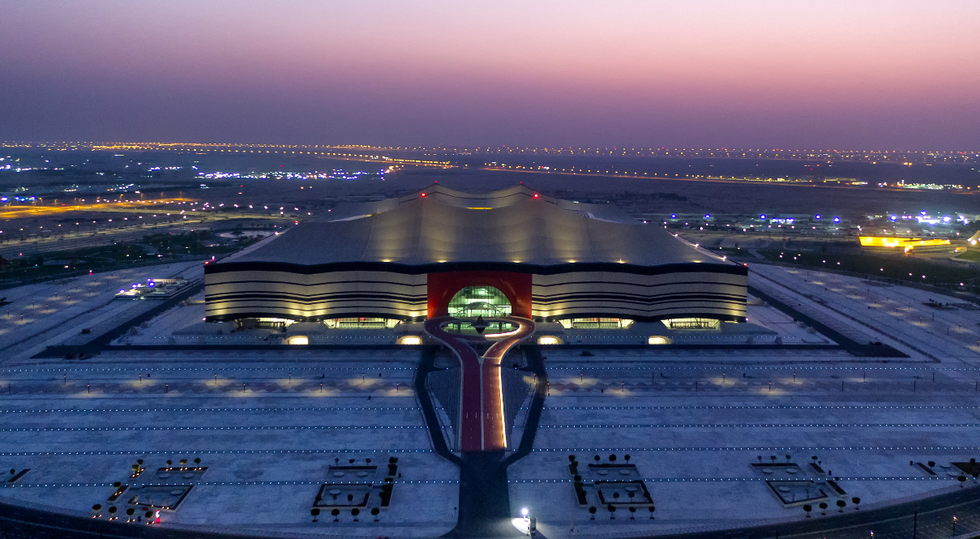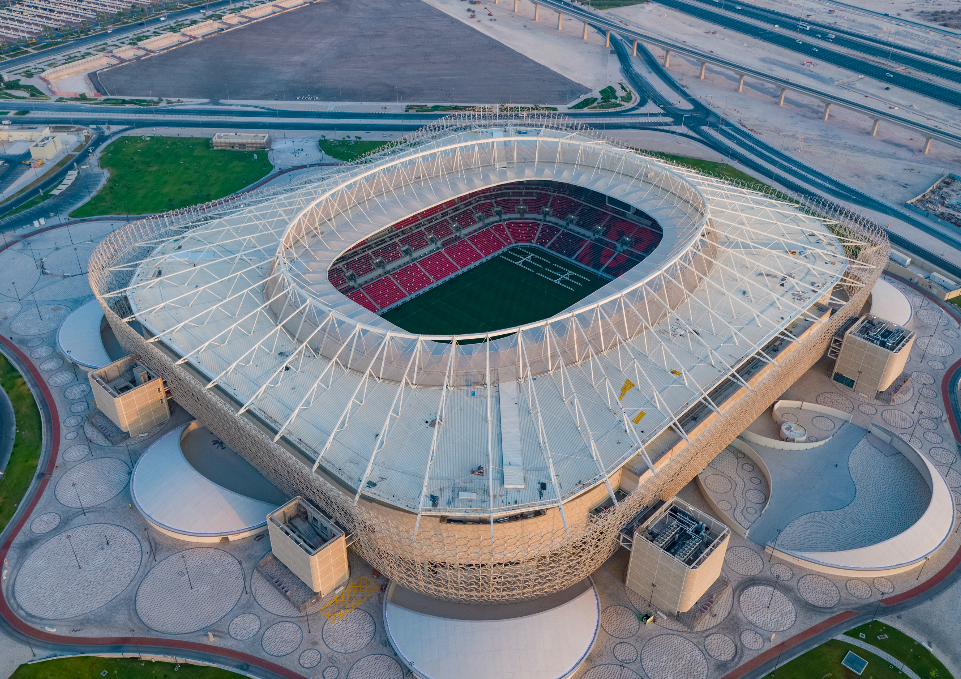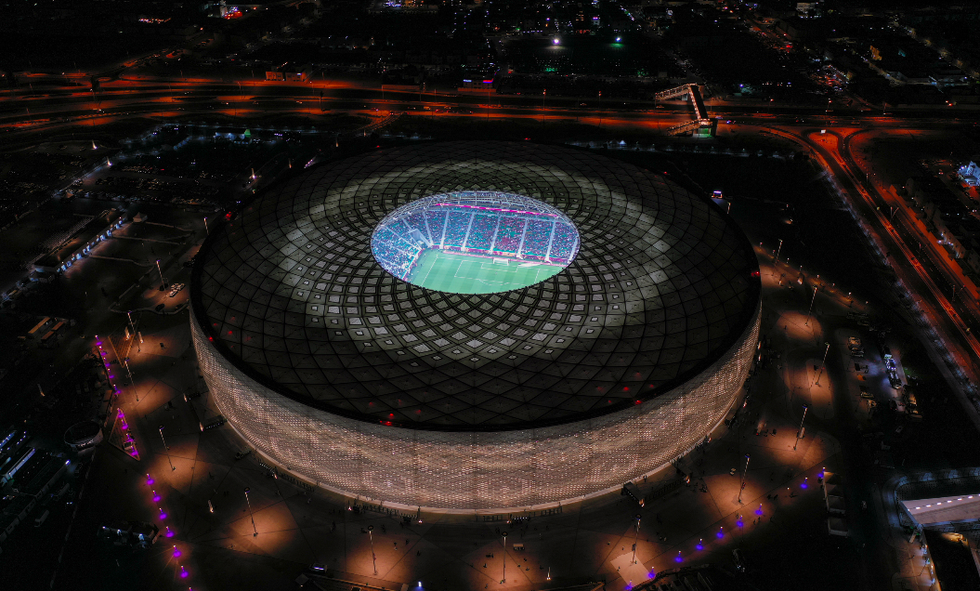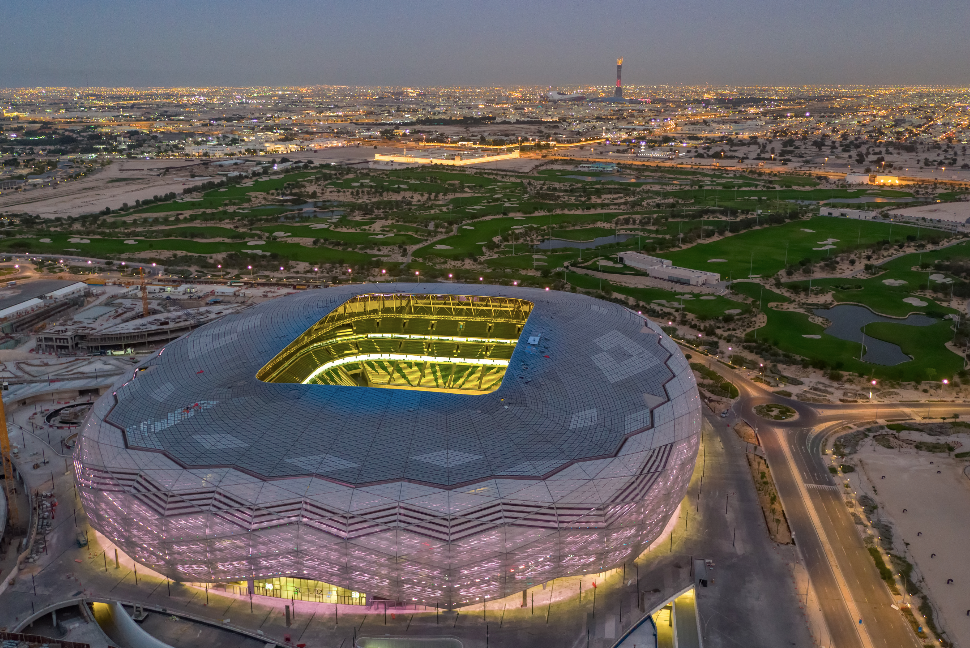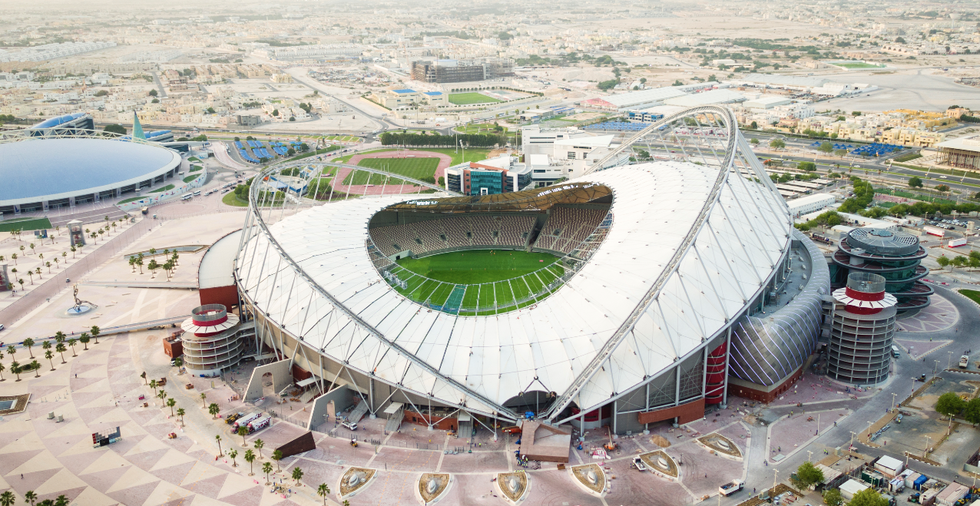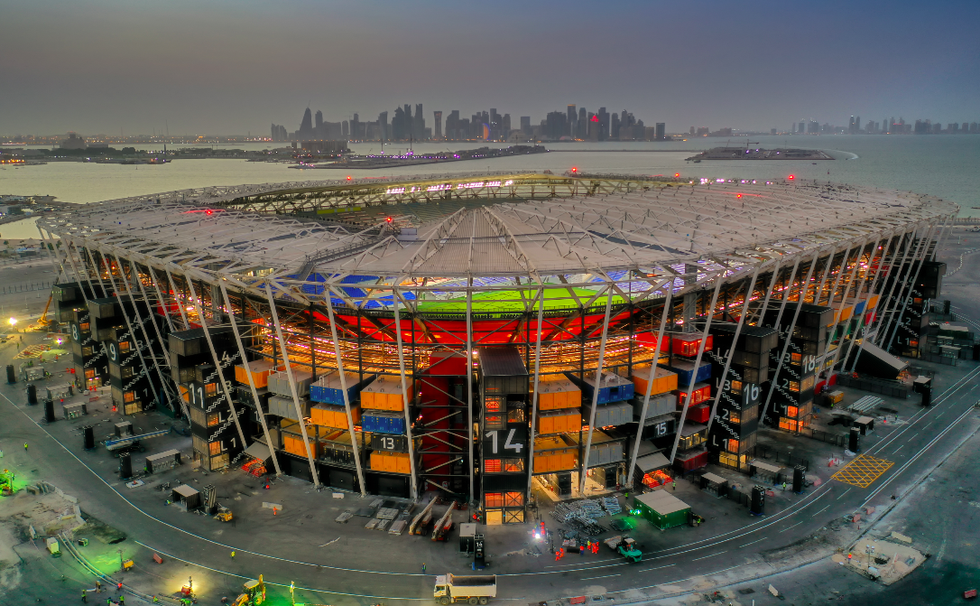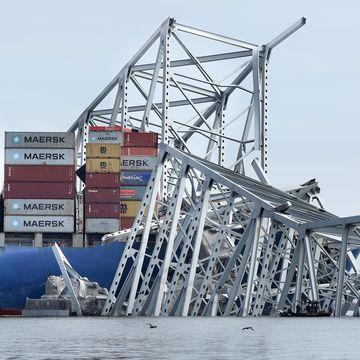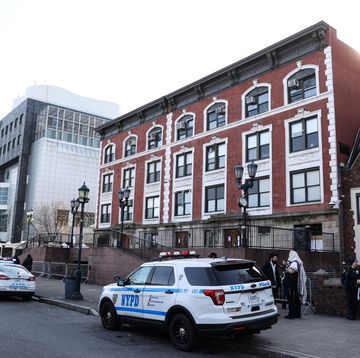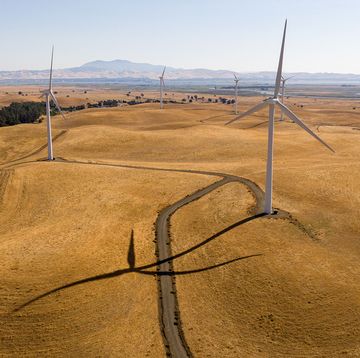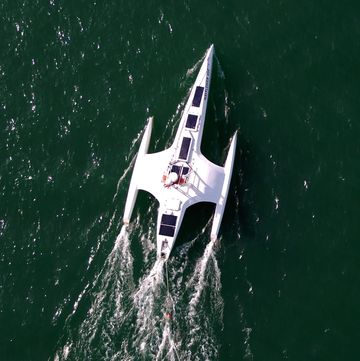- Seven new stadiums for the 2022 FIFA World Cup in Qatar include designs from some of the world’s most famous stadium architects.
- Stadium designs evoke Arab culture, but also include new features, such as 974 shipping containers to make up a large portion of one new venue.
- The majority of venues will resize following the World Cup to host a variety of events.
The 2022 FIFA World Cup in Qatar features seven brand-new stadiums, and one of them will fully disappear following the nearly month-long event. Marking a shift for soccer’s world stage, which occurs every four years, the climate in Qatar forced this year’s iteration of the 32-country tournament into the winter. Still, the new stadiums required a mix of cooling technologies, retractable roofs, and shade-offering designs.
⚽️ Design is all around us. Let’s explore more futuristic builds together—join Pop Mech Pro.
To host 64 games between November 20 and December 18, Qatar repurposed one venue and built seven new ones. (It must be noted that Qatar’s record of using migrant workers is subpar, and there’s no accurate record of the number of deaths that occurred during construction.) Recruiting world-famous stadium designers to create Arab-inspired designs, Qatar constructed one venue from 974 shipping containers, and plenty of the other venues will downsize following the event.
Here, we break down all eight stadiums for the 2022 World Cup in Qatar and their cutting-edge feats of engineering and technology.
Al Bayt Stadium
Al Khor City
Capacity: 60,000
The World Cup kicks off on November 20 in Al Bayt Stadium, a venue that opened in 2021 under the design of Dar Al-Handasah, and will also host one of the tournament’s semifinal matches. Meant to resemble a tent historically used by nomadic people in the Qatar and Gulf region, a PTFE (Polytetrafluoroethylene) woven fiberglass membrane includes a retractable roof meant to compliment cooling technologies. Following the World Cup, the 60,000-seat venue will downsize to accommodate 40,000 seats. The modular upper tier will be removed and seats will be repurposed for other sporting facilities around the world. Along with the green space that surrounds the venue, the upper concourse will be converted with the sky box level turning into a five-star hotel. A shopping center, food court, gym, multipurpose hall, and sports medicine hospital will all incorporate into the stadium.
Lusail Stadium
Lusail City
Capacity: 80,000
The largest stadium for the tournament—and host of the championship match—takes cues from architects Foster + Partners and Populous. Inspired by the light and shadow of a “fanar” lantern, the façade features triangular panels and a steel frame with additional decorations resembling the motifs found on regional artistic bowls. Opened in 2022, the seating bowl comes in three tiers. The PTFE roof lets in light for the natural grass field to grow, while offering protection from warm wind and dust and offering shade to reduce the pressure on the venue’s air conditioning. Following the tournament, Qatar says the venue could turn into affordable housing units, shops, food outlets, health clinics, or even a school. The upper tier will likely become an outdoor terrace for new homes.
Ahmad Bin Ali Stadium
Umm Al Afaei
Capacity: 40,000
With a glowing façade created by Ramboll and Pattern Design, comprised of patterns important to the region—including the undulations of sand dunes—the 40,000-seat venue that opened in 2020 takes the place of a stadium that once stood in the same spot. More than 90 percent of the construction materials were reused or recycled from the old stadium, and trees were moved to other locations on the property. Following the World Cup, 20,000 seats will be removed and repurposed for other sporting events, and the site will become the home of a local soccer team.
Al Janoub Stadium
Al Wakrah
Capacity: 40,000
In a tribute to the city’s seafaring past, the 40,000-seat stadium was inspired by the sails of traditional dhow boats. With a retractable roof, the 2019-opened stadium will be used year-round for the local soccer team, and repurposed down to 20,000 seats following the World Cup. The roof, weighing 416 tons, was built on six temporary frames before being lifted into place and welded together. Steel wires can move the steel structure open and closed. AECOM and Zaha Hadid Architects designed the stadium.
Al Thumama Stadium
Al Thumama
Capacity: 40,000
Meant to represent a gahfiya, the traditional woven cap worn by men and boys across the Middle East, the white exterior stands out against the green surroundings. Designed by architect Ibrahim M. Jaidah, the 40,000-seat venue opened in 2021. The gahfiya design is more than a nod to culture, as the cap-like design was meant to pair with the cooling technology to protect against penetrating sun. Following the World Cup, 20,000 seats will be removed, and a boutique hotel will replace the stadium’s upper stands, offering views onto the soccer field.
Education City Stadium
Al Rayyan
Capacity: 40,000
The façade of the 40,000-seat stadium, designed by Fenwick-Iribarren Architects and Pattern Design, opened in 2020 featuring triangles that form a diamond-like geometrical pattern that appear to change color with the sun’s movement across the sky. At night, that same façade turns into a digital light show. As part of a sports hub for the community following the World Cup, 20,000 seats will be removed and the top tier of the venue can turn into classrooms for nearby universities.
Khalifa International Stadium
Aspire
Capacity: 40,000
The only existing stadium repurposed for the 2022 World Cup, the stadium was originally built in 1976, but was redeveloped in 2017 by Dar Al-Handasah, the original stadium architect, in preparation for the global stage. The stadium’s dual arches remained intact and were joined by a wide canopy to support the integration of the cooling system. A new tier of 10,450 seats pushed the capacity to 40,000, and a fresh LED lighting system adds to the fan features.
Stadium 974
Ras Abu Aboud
Capacity: 40,000
Constructed entirely from 974 shipping containers (which, notably, is also the region’s international dialing code) and modular steel, this becomes the first World Cup Stadium that will be fully removed following the tournament. Designed by Fenwick-Iribarren Architects as a tribute to Qatar’s history in worldwide trade and seafaring, the standard shipping containers offer a colorful array for everything from concessions to stairs, and the modular design reduced material requirements. Many of the materials needed for the venue were brought to the site in the containers now used in the venue. With its location amidst natural wind patterns, the seating bowl for the 2021-opened venue uses breezes instead of cooling technology for ventilation.
Tim Newcomb is a journalist based in the Pacific Northwest. He covers stadiums, sneakers, gear, infrastructure, and more for a variety of publications, including Popular Mechanics. His favorite interviews have included sit-downs with Roger Federer in Switzerland, Kobe Bryant in Los Angeles, and Tinker Hatfield in Portland.
